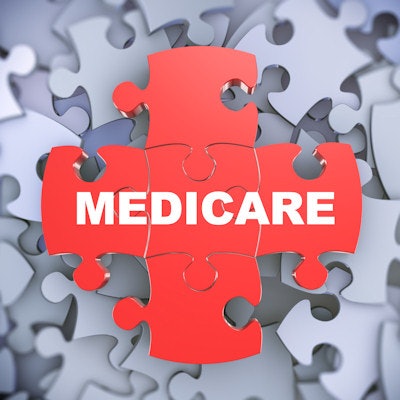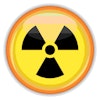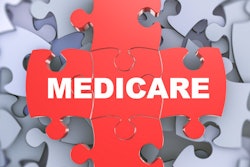
Radiology and interventional radiology would see slight cuts in reimbursement for imaging exams billed to Medicare in 2020, according to a proposed Medicare Physician Fee Schedule (MPFS) released on July 29 by the U.S. Centers for Medicare and Medicaid Services (CMS).
If the proposal is finalized in November, radiology would see a 1% decrease in reimbursements and interventional radiology a 2% decrease, while nuclear medicine would see an increase of 1% and radiation oncology/radiation therapy will see no change. CMS estimated a 2020 conversion factor of $36.08, a slight increase from the current conversion factor of $36.03.
New codes
CMS is recommending 100 new and revised radiology codes for 2020, increasing values for some and decreasing values for others, the American College of Radiology (ACR) said.
"Of these codes, CMS is proposing to accept the RUC [RVS Update Committee]-recommended values for over 60; however, it is also proposing to decrease values for 41 radiology-related codes pertaining to procedures such as intravascular ultrasound; CT of the orbit, sella, or fossa; abdominal aortography; pericardial drainage procedures; bone biopsy; lumbar spinal puncture; x-ray of sinuses; x-ray of neck; and myocardial imaging with PET," the ACR stated in an analysis posted on its website.
AUC/CDS matters
The rule does not include any further clarification regarding appropriate use criteria (AUC) or clinical decision support (CDS), although in 2018, CMS declared that providers must consult appropriate use criteria when ordering CT, MRI, PET scans, and nuclear medicine exams for Medicare patients starting January 1, 2020, the ACR said.
More on MIPS
CMS is focusing on making improvements to the Merit-based Incentive Payment System (MIPS) program, proposing a framework called MIPS Value Pathways, a program that would begin in 2021. It has also suggested increasing the weight of the cost category under MIPS for 2020 to 20%, lowering the quality category weight to 40% (and lowering further to 35% in 2021 and 30% in 2022), and maintaining the weights for promoting interoperability and improvement activities at 25% and 15%.
Finally, the proposed rule also includes reference to the following:
- Updated pricing for 70 equipment and supply items for ultrasound and vascular ultrasound rooms.
- Further language on two radiology codes that CMS sees as misvalued: fine-needle aspiration biopsy, including ultrasound guidance (10005), and fine-needle aspiration biopsy without imaging (10021).
- CMS is seeking comment on the possibility of bundling payments under the MPFS.
- Revised physician supervision requirements for physician assistants.
HOPPS changes
Also on July 29, CMS released its proposed Medicare Hospital Outpatient Prospective Payment System (HOPPS) and Ambulatory Surgical Center (ASC) payment system rule for next year. The agency is suggesting an increase in the HOPPS conversion factor by 2.7%, bringing it to $81.39; for hospitals that fail to meet CMS quality reporting requirements, the conversion factor would be $79.77.
In addition, CMS aims to begin using CT and MRI cost data in 2020 regardless of the cost allocation method -- which is cause for concern, according to the ACR.
"The ACR has raised concerns many times in the past regarding the use of claims from hospitals that continue to report under the 'square foot' cost allocation method, noting that it would underestimate the true costs of CT and MR studies," the organization wrote in its analysis. "CMS has given hospitals six years to adjust their cost allocation methods from 'square foot' to either 'direct' or the 'dollar' method. These changes are the result of a study that was done by the Research Triangle Institute (RTI) back in 2007. Although the ACR has argued that the RTI study and data which back it up are outdated, CMS is adamant to continue with fully implementing its recommendations."
CMS is also reclassifying two CT lung screening exams: G0297 for low-dose CT for lung cancer screening, with a payment rate of $81.28, and G0296 for a visit to determine low-dose CT eligibility, with a payment rate of $81.06.
In this HOPPS rule, CMS proposes to create two new comprehensive ambulatory payment classifications (APCs): one for level 2 vascular procedures and another for level 1 neurostimulator and related procedures. This would increase the total number of comprehensive APCs to 67. CMS has not put forward any new changes to the APC structure for imaging codes, but it has moved some of them within categories so that some pricing would change.
The agency is taking comment on both proposed rules through September 27.



















